
Photo by Aldona
Legendary fashion labels that reach cult status are few and far between. BIBA, founded by Barbara Hulanicki and her late husband Stephen Fitz-Simon, is one. 57 years ago, the first BIBA shop opened in London, and it started a fashion revolution.
With its stylishly decadent ART DECO atmosphere, the BIBA look defined an era. It was the quintessential fashion look of the Swinging ’60s at the start of women’s lib; women stopped dressing to conform and had the courage to dress the way they wanted.
From 1964 to 1975, BIBA was THE hangout for artists, film stars, and rock musicians. It was where those in the know in London – including Mick Jagger, David Bowie, and Twiggy – went for the best clothes. Anna Wintour got her start in fashion at the age of 15 as a BIBA employee. It was the No. 2 tourist destination in London, just behind the Tower of London and Buckingham Palace.
Unsurprisingly, BIBA is constantly being rediscovered, and so is Hulanicki, whose influence in the ’60s inspired a global shift in women’s fashion. The 85-year-old Warsaw-born designer is a marketing genius and style trailblazer, far ahead of her time in her conception of the shopping experience. Hulanicki, who began her career as a fashion illustrator, continues to stay relevant and reinvent herself.
For spring, Barbara is launching a new mid-priced label, HULA, with the digital fashion platform BrandLab360. The HULA collection combines modern forms with various print aesthetics taken from art and culture. The original fabrics are covered with Barbara’s bespoke print illustrations.
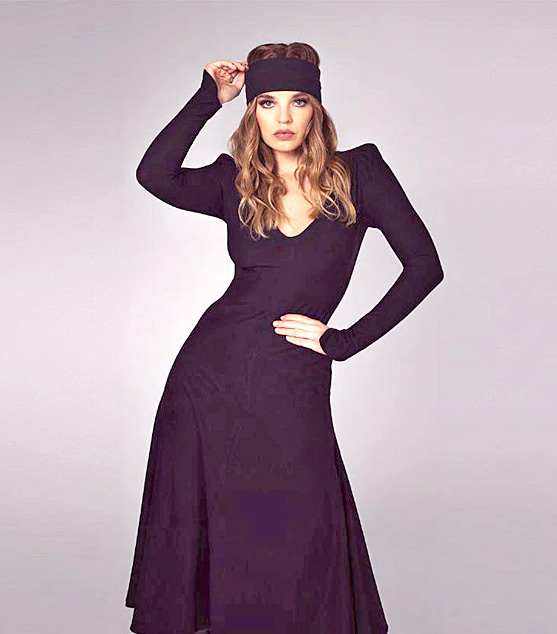
“I was so impressed with BrandLab360 when I met the founders in Miami that I wanted to be involved in their visionary project of showing new collections in virtual settings. As well as reducing the buyers’ carbon footprint, it will make sure my collection reaches a much wider audience. The future of fashion is going digital,” observes the designer.
About 10 months before Daniel Lee resigned from Bottega Veneta, he made the decision to pull out of social media. In its place, he launched their very own “digital journal’ which was going to be published 4 times a year and coincide with the launch of Bottega collections in store.

Daniel was so impressed with Barbara’s illustrations he asked her to contribute. Barbara’s exuberant fashion illustrations were also the starting point for her collaboration with British retailer Topshop back in 2009.
An article, “How Biba Founder Barbara Hulanicki Rewrote the Rules of Fashion” by Jenny Comita, appeared in W Magazine’s annual “The Originals” issue, 10/12/21. As a child of the ’60s, I have long been intrigued by the brand, and I wanted to know its celebrated founder better.
Our mutual friend, Adrienne Bon Haes, made an ‘e’ introduction. Bon Haes and her partner Marvin Friedman live in Miami, where Hulanicki resides. A subject of one of my recent articles, the contemporary art-dealing couple met Barbara at an Art Basel dinner hosted by Bon Appetite Magazine many years ago.
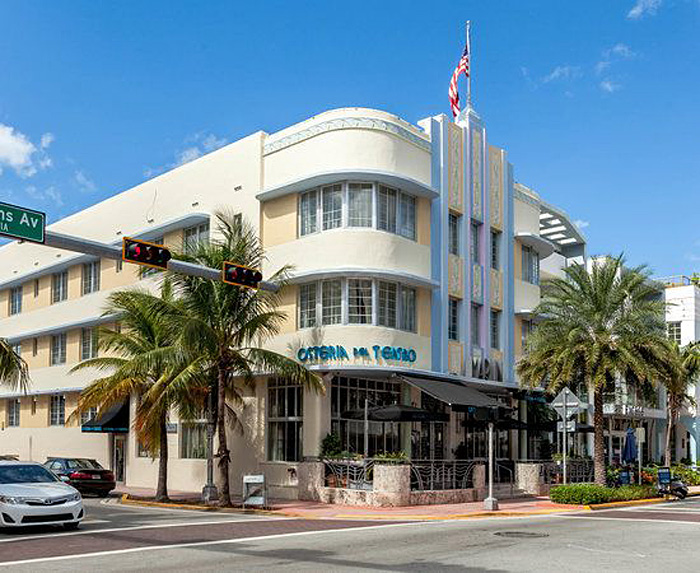
Barbara has played a key role in the regeneration of Miami Beach. She first came to Miami in the late ’80s at the request of The Rolling Stones’ Ron Wood, who invited Barbara to design a nightclub complete with neon inlaid bar top. Then Island Records founder Chris Blackwell and developer Craig Robins asked her to create the interiors for the Marlin Hotel on South Beach and Barbara did 10 more.
Every property owner in Miami is in the debt to Barbara for the rise in the real estate values.
Adrienne Bon Haes
It was the beginning of the art deco revival of South Beach. The pictures of those eccentric interiors designed by Barbara circulated through the media, sparking worldwide interest in Miami as the new cool playground. The Europeans haven’t stopped coming ever since. Barbara continued to do several hotel projects for Blackwell and others.
She also designed Gloria and Emilio Estefan’s home on Star Island in the early 1990s. “The creative approach is the same whether you design clothes or buildings,” says Barbara.
Barbara and I email back and forth and have spoken on the phone several times. She has a wonderfully wicked sense of humor and is both self-deprecating and humble. I am fascinated by Barbara’s prescience and far-reaching influence.
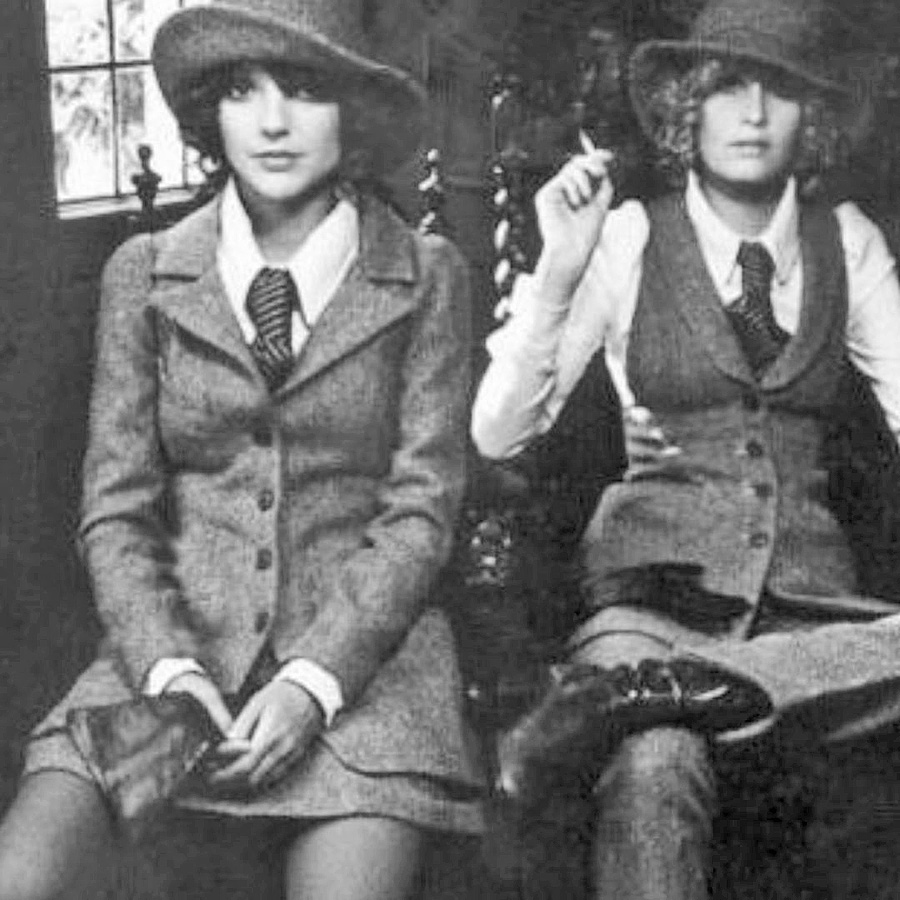
Photo: galadarling.com
The signature shapes of slim cuts, high armholes, statement shoulders, and sleeves Barbara created for her BIBA label continued influencing designers for generations, including her good friend Anna Sui, Marc Jacobs, and Yves Saint Laurent. Yves always made BIBA the first stop in London and copied Barbara’s brass-buttoned naval jackets.
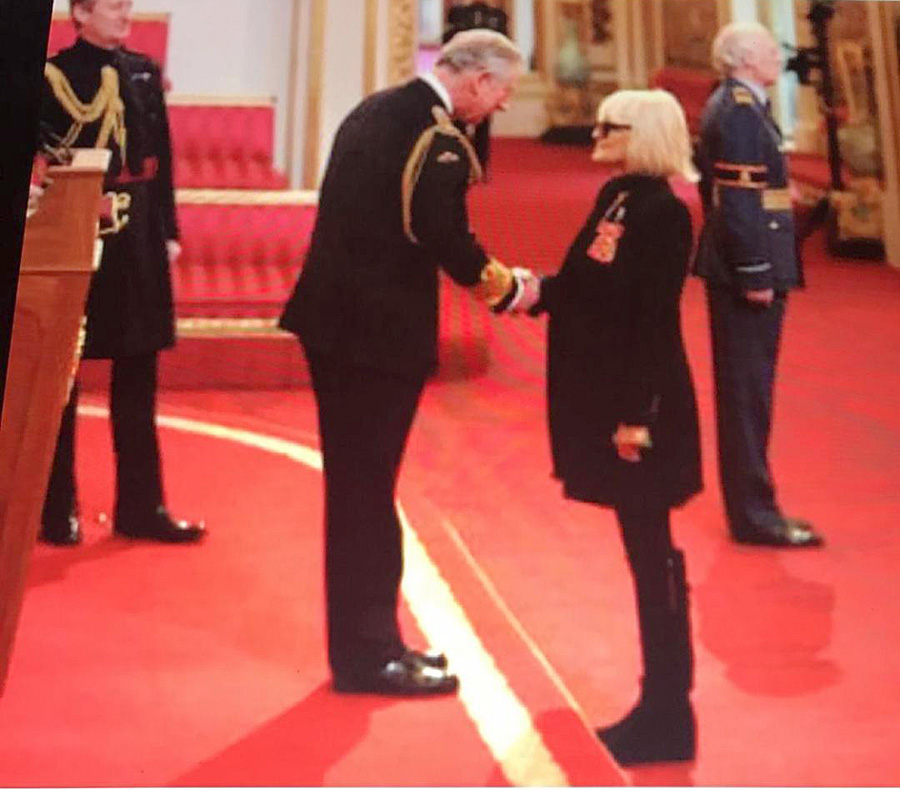
Barbara is a marketing genius and style trailblazer, and she has the accolades and the firsts to prove it. In 2012, Barbara received the OBE (Order of the British Empire) Award for services to fashion and acknowledgment of Barbara’s huge impact on the face of fashion retail in the UK.
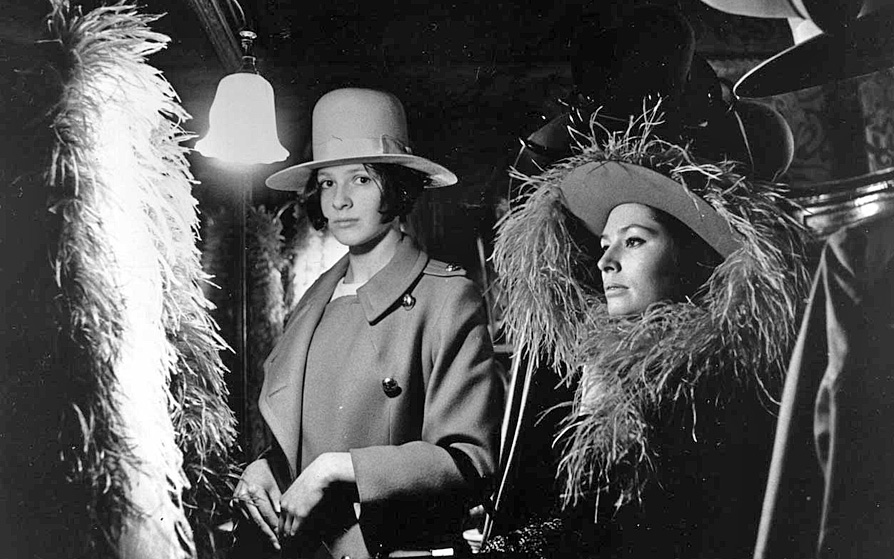
Photo: considerable.com
There is an undeniable brilliance in Barbara’s designs and her approach to retail. Emerging from Hulanicki’s mail-order business and named after her younger sister’s nickname, the BIBA store was, first and foremost, a pioneer in fast fashion. She did gender-bending fashion before anyone else. The guys often bought women’s clothes which they fit into because they were quite small.
Barbara created the first fashion T-shirt for women, and she designed the rugby dress before Ralph Lauren. Barbara was among the first to develop the mini skirt, and inspired by the early practical Burberry Mac, she reshaped and reinvented the raincoat into a fashion statement.
BIBA had a famous mistress room selling Theda Bara-type brass bra cups and “naughty” knickers. You could get ice creams at the Art Deco Rainbow room. Barbara hated the baby blue and prissy pink customarily used for baby clothes. When her son was born, she dressed him in black diapers and launched a sophisticated collection of black and purple children’s clothes.
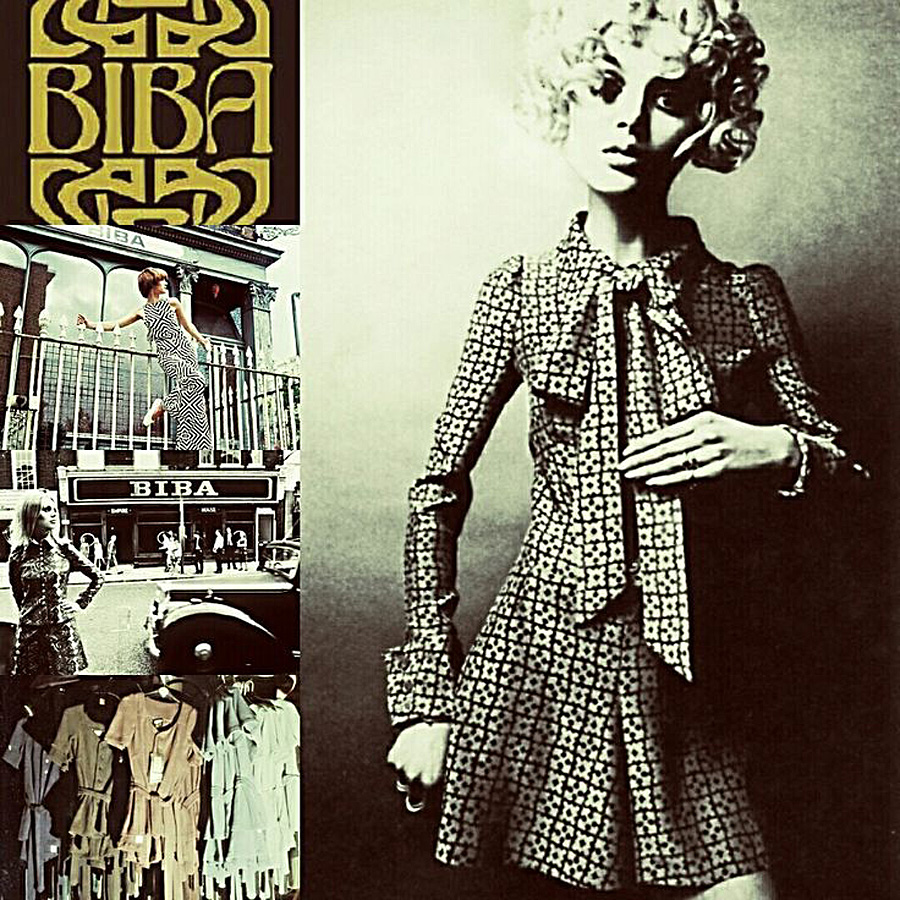
The Biba label itself was so iconic and instantly recognizable that customers coveted a small souvenir from the store, whether a deck of cards or a pin. Barbara used the best photographers of the day to create her mail-order catalogs which are akin to the way we shop today.

I asked Barbara if there are any brands that have the magic of BIBA. “SHEIN,” the Chinese online fast-fashion retailer, was her immediate response. “They have incredible stuff that comes straight from the factory. About two months ago, they set up a pop-up shop in a beautiful art deco building in South Beach, and there were thousands of young girls waiting in line.”
Barbara says SHEIN is doing precisely what they did back in the day, making small batches of things all the time. It’s very tempting and immediate, and it’s very inexpensive, with prices as low as $5-$10. Barbara is also a fan of Zara. She always checks out the store and praises their fabrics and shapes as a customer.
Barbara’s favorite designer is Rick Owens. Because Rick was a pattern maker, his jackets are extraordinary. She also gives high marks to Alexander McQueen, the late designer and the label now designed by Sarah Burton. I wanted to know Barbara’s opinion of Chanel under Virginie Viard. “Chanel is very difficult to do. Coco was very clever; she had only one pattern of a jacket, and the designers have been very clever about what they do with that bloody jacket,” she notes. “You can put it with shorts and that looks very new, but the minute you stray off that Holy Grail, you’re in trouble.”
Barbara agrees that it’s a challenging time for fashion, especially for the luxury market. “You can’t get the young ones because they are all buying second-hand and vintage. The luxury houses are using the same designers. They all go in circles. It all begins to look the same. It’s very boring,” Barbara opines. Another problem, according to Hulanicki, is that the fashion world keeps trying to find the “new black.” There is no substitution for black, as exemplified by all the navy clothes she sees on the sale racks at the end of the year.

Photo: phonicalia.com
Barbara is highly consistent in her design aesthetic, and she has a finely honed sense of style. She always looks hip, cool, and pulled together, relying on a wardrobe almost entirely in black although lately, beige has managed to creep in from time to time. As she put it, “I’d be distracted if I wore color. With an all-black wardrobe, everything matches and life is simpler.”
Hulanicki’s uniform is built around black leggings and impeccably cut black jackets from Rick Owens and Alexander McQueen. She collects leggings and has worked really hard on the leggings in her HULA collection, ensuring the fit is perfect and that they fall over the shoe.
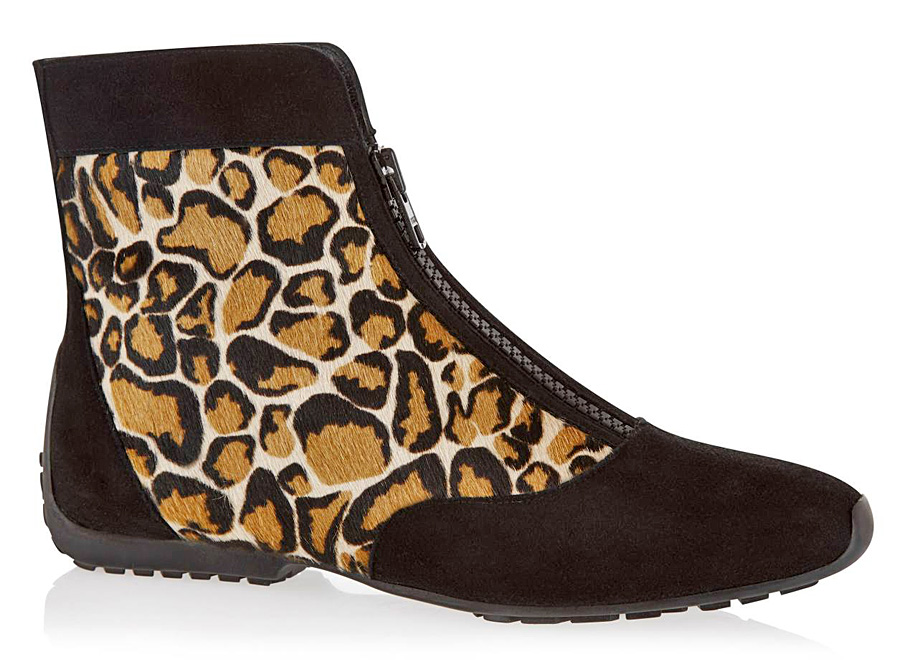
In 2016, Hulanicki collaborated with footwear label French Sole on an exclusive collection and she would love to design shoes again. Hulanicki feels strongly about the return of the boot in all its guises and sees a void in the women’s sneaker market. “There are no sneakers for women. They are all so bumpy in the back. Chunky shoes are over”. Hulanicki relies on her cache of sneakers to facilitate walking around Miami, her secret to staying in shape.
Barbara emphasizes the importance of staying thin because you will look good in everything. That might not be a politically correct statement in this era of inclusion and acceptance of all body types, but I agree entirely.
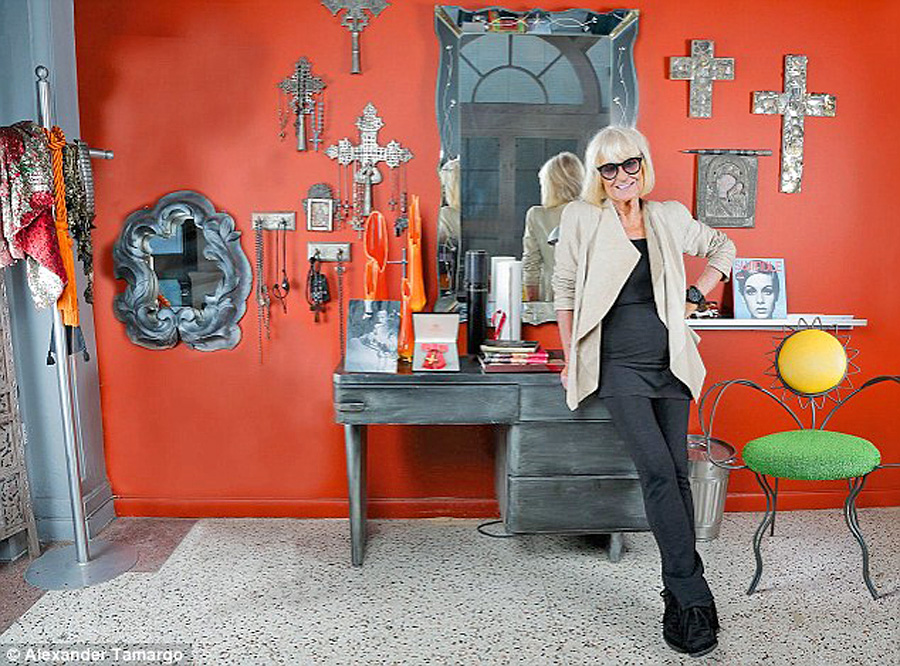
Photo: dailymail.co.uk
In addition to working on her new line, Barbara generously mentors young design students. She can be found photographing street styles on South Beach or in the Miami Design District. “She’s incredibly observant, and her eye remains spot on,” says Adrienne Bon Haes. Hulanicki is also busy organizing her archive, hoping to place it with a collector, a museum, or a teaching institution.
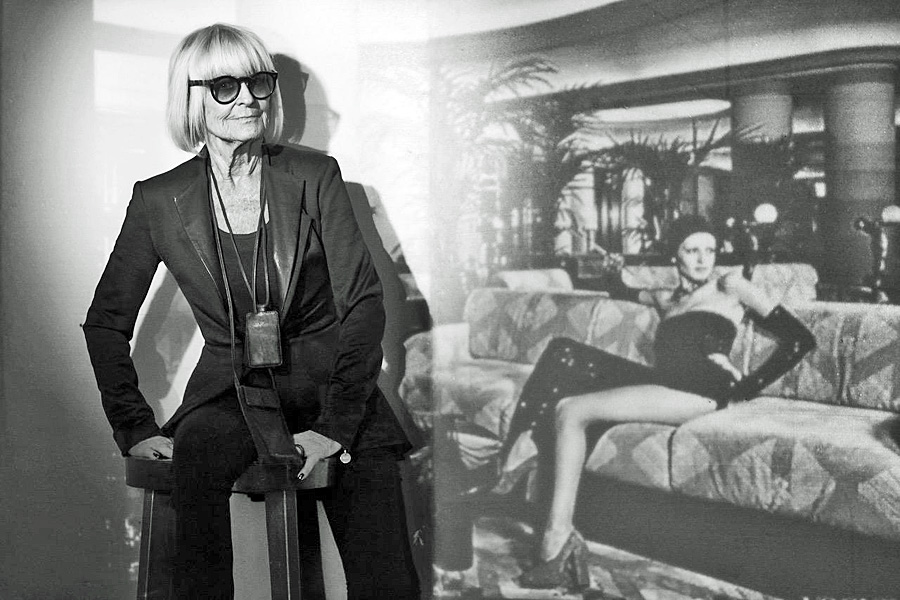
Photographed by Justin Villeneuve
There have been several unsuccessful attempts to relaunch BIBA after its closure in 1977, and Barbara was not involved with any of the relaunches. In 2009 the British department store group House of Fraser bought the rights to the BIBA label. In 2014, Hulanicki agreed to serve as a consultant for BIBA, the first time since 1975 that she had been involved with the brand she created.
When I asked Barbara if it was okay for me to mention her age in the article, she laughingly responded by saying, “Yes, Yes !!! Haha !!!! Also, could you please say that before I go, I will get Biba back !!!!!!!!!!!!!!”

What an interesting, dynamic woman!
What a delight — I loved Biba! Those suede boots!
All very sensual….
Carol Troy
Impeccable story on one of the most important women in fashion history. Thank you for shining a new spotlight on the iconic Barbara Hulanicki!
Hello, I follow you on this site (love the site) this was a fantastic scholarly article and should be used for reference. Pls do not use my name, I usually do not reply but need to let you know how good this is!
HNY
Excellent article. Wish I kept my Biba stuff. I went shopping every week…..